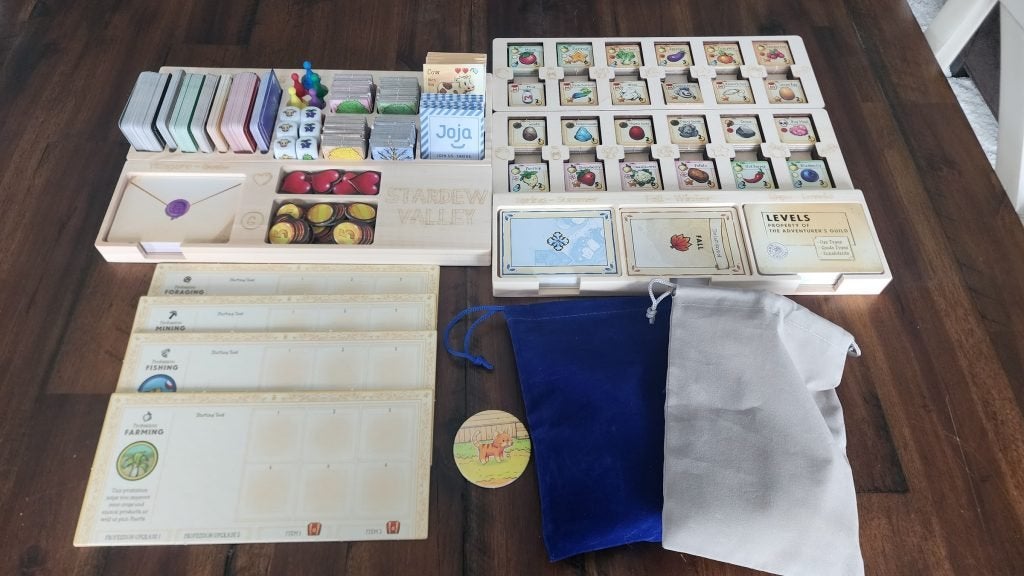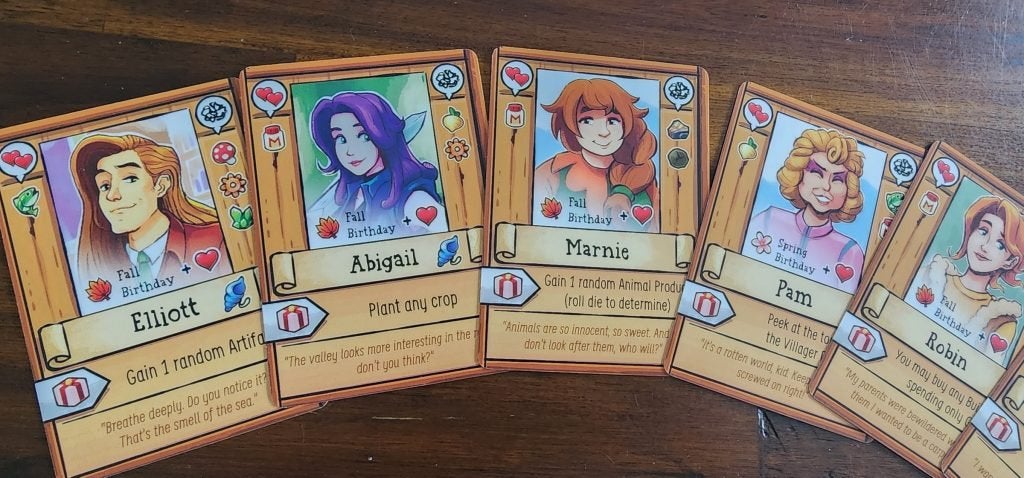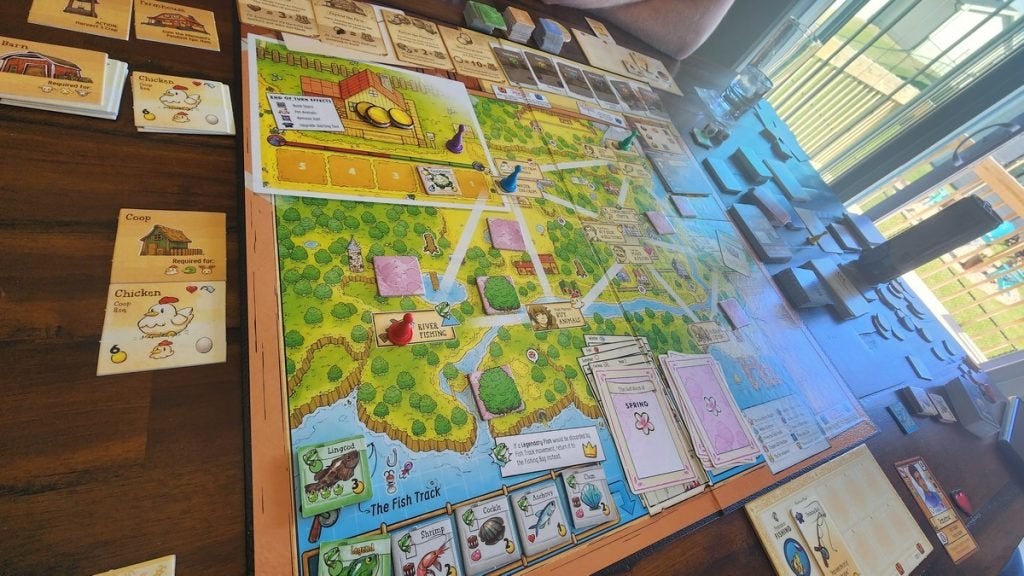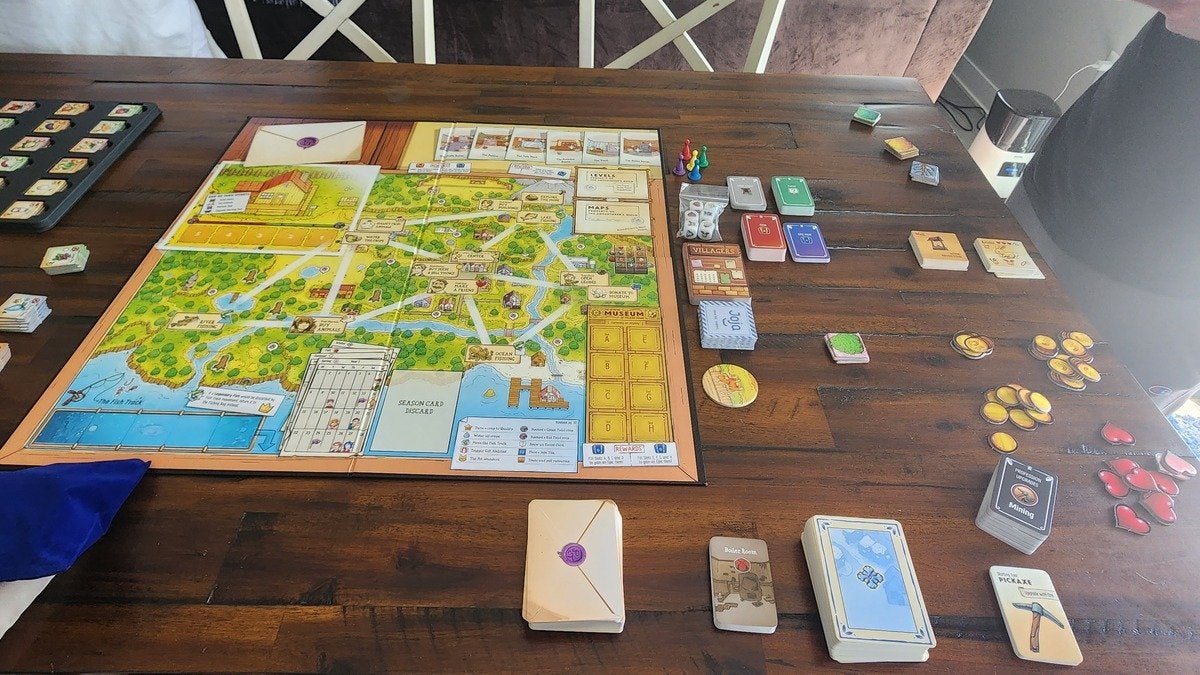



Pros
- Tons of references and nods to the much loved video game
- Engaging and colorful art style
- Relies on teamwork, making it a great choice for close friends and family
Cons
- Tight game clock leaves little room for leisurely exploration
- The luck element can completely derail your playthrough
- Production quality can be hit-or-miss
In our review, we find that Stardew Valley: The Board Game transforms the beloved farming sim into an engaging multiplayer tabletop adventure. While it doesn’t quite capture the magic found in the 2016 indie title, fans looking for a more challenging variation won’t be disappointed by this strategy-heavy game.
Table Of Contents
A Tabletop Trip to the Valley
The gaming landscape shifted monumentally following the release of Stardew Valley in early 2016. Developed entirely by Eric Barone (ConcernedApe) over four and a half years, the zen title invites players to enjoy its world in any way they see fit. There is no right or wrong way to play it.
Compared to other popular titles on the market, this game was meant to be more of an escape and less of a grind. The relaxing romp has seen no decline in its popularity, with fans still very much addicted to its gameplay, music, characters, and coziness factor. Players searching for a bit of respite and tranquility after a long day see the Valley as their nostalgic happy place. To them, farming is a joy and not a chore.
Impressively, Eric Barone and board game designer Cole Medeiros decided to take on the Herculean task of transforming Stardew Valley into a tabletop game. Upon its release in 2021, fans of the original title wondered how and if the whimsy of the video game could be properly reimagined in board game form.
What about the soundtrack? The countless conversations with villagers? Playthroughs racking up hundreds upon hundreds of hours? What could a Stardew Valley tabletop game possibly look like?
The simple answer: it looks gorgeous. Every card, tile, and game piece is beautifully decorated with familiar items from the virtual title. Despite the massive scope of Stardew Valley, nothing has been left out from the board game version. This means that you’ll be sorting pieces for a good while prior to your first playthrough. Glimpsing the hundreds of pieces present inside the game box is overwhelming; it’s a good indicator of the chaos to come.

Familiar Faces and Unfamiliar Stress
While the original title is more open-ended, a board game needs a proper ending point. In Stardew Valley: The Board Game, between one and four players must work together to complete four of Grandpa’s Goals. Each goal is chosen at random.
Players must also restore the Community Center by completing six random bundles requiring various goods. These goals dictate how the game will need to be played, as every player only has 32 actions per game. This leaves little time for exploration or experimentation, and you’ll need to strategize efficiently before each turn to ensure no resources are lost. Sometimes, no matter how much effort you put into the Planning Stage, a single bad dice roll can end your run.
Like in the video game, each playthrough lasts for one year. There are plenty of ways to spend a turn. You can choose to make friends, go fishing, forage for goods, and much more. With so many available options, some players may get frustrated. Tons of planning must be put into each and every turn. In order to attain victory, you need to complete every task before winter comes to a close.
The Polarity of Game Piece Quality
Throughout our review process, we found that some of the best parts of the Stardew Valley board game are the countless components. Fans with a long history playing the life sim will be thrilled to see their favorite characters in card form. They’ll be even more excited to find out that marriage is still very much present!
Everything from the well-crafted Heart and Gold Tokens to the detailed Mining and Foraging systems harkens back to the board game’s origin. It’s clear that this was a labor of love and not an easy money grab. After all, they could have slapped some Stardew Valley art on Monopoly and called it a day.

Good Luck…You’ll Need It
After selecting their profession, each player can perform two actions as they explore Pelican Town each turn. Random Season Cards impact what the group’s turn will look like, for better or worse.
Positive Season Cards can bless your game with helpful Events or Gifts. Conversely, negative Season Cards can result in your crops being eaten by crows or Joja taking over a portion of your map. This randomization makes the game more replayable. Alternatively, it can also undermine any careful plans you and your friends may have painstakingly created.
While there are ways to alter the difficulty, trying to gain the resources you need in order to win is still tough within the number of available turns. Some runs are as smooth as butter. However, others feel like an exercise in futility as the dice never fall the way you need them. For non-competitive players, this can potentially be overlooked. With that said, for board game enthusiasts who don’t want anything but the gold medal, this can be incredibly frustrating.
Hitting the Engine-Building Sweet Spot
It’s easy to get discouraged when a playthrough isn’t going your way. On the flip side, it’s unspeakably satisfying when everything works out in your favor. Throughout our review process, it’s clear that the Stardew Valley board game can be a great time. In fact, the act of opening the board and setting up the pieces is enough to put a smile on any major fan’s face.
The key is not to take things too seriously. Remember that as an engine-building game, certain tasks will become easier as the seasons progress. Working together with your buddies inspires memories of multiplayer runs in the Valley.
However, instead of needing a mod to stop time, you can work with your friends for as long as you like. Each Planning Phase gives you ample opportunities to do so. The board game isn’t relaxing by any stretch of the imagination, but that’s not necessarily a bad thing.

Fun for Old Fans and New Players Alike
Some individuals who joined us for our first few playthroughs had never played the Stardew Valley video game. Despite being clueless about the nature of the title and its lore, they were hooked on the gameplay loop within the first round.
Had they been longtime fans, we can imagine the excitement out of the gate would have been even more measurable. While we lost abysmally the first few times, we eventually found a groove. More importantly, we lucked out with Grandpa’s Goals. Winning does feel good when everyone gets to enjoy the sensation.
Stardew Valley: The Board Game caters to an odd niche. It’s for players who love the relaxed aspects of the video game, but also want to sweat and stress during a tabletop session. Learning how to play the Stardew Valley board game can also be a bit taxing. Although it’s worth it for hardcore fans.
Lovers of the original title might want to pick it up for their collection regardless. With a bit of patience (and practice), it’s possible to have a good time chasing victory with some good friends. Advice: don’t be too competitive and accept that the game itself will win a good chunk of the time.


